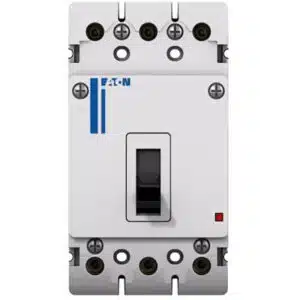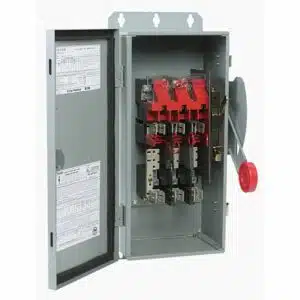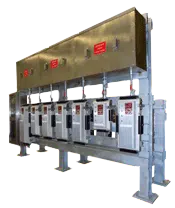
Severe consequences and malfunctions may result if an electrical circuit starts carrying more current than it was originally designed to handle. For example, such an instance may result in the damage of delicate equipment like electronics, lighting, and motors. The extra current carried by the electric circuit can generate a lot of heat in the wires. Now, these wires aren’t meant to carry such an increased load. Ultimately, this might result in a fire in the facility and might spread to the immediate surroundings.
Devices like fused disconnect switches and circuit breakers (see Spike’s EXB/EIB, EBMB, and ECB) are designed to resolve the issue involving overload of current. What do these devices do? In the event of an overload or a short-circuit, these devices engage or disengage the circuit, thereby preventing damage to the connected equipment and fires. In many industrial and commercial facilities, fused disconnect switches and circuit breakers are used interchangeably. However, in few applications, only one among these two devices is used depending upon the necessity.
At Spike Electric we have an excellent team of professionals who will help you to determine the best solutions to your electrical needs. We provide an exclusive range of both fused disconnect switches and circuit breakers. These circuit breaker disconnects and fused disconnects are typically in stock and ready for immediate shipment, have been providing superior quality electrical products and services to a wide network of commercial and industrial clients.
Does your industrial facility or commercial space need safety switches, disconnects, or circuit breakers?
Get in touch with Spike Electric today!
Circuit Breaker vs. Fused Disconnect
 Circuit breakers and fused disconnect switches serve the same purpose. Both are designed to open a circuit decisively when there is a current overload or a short circuit. The only difference is in their designs and the circumstances under which they are employed or utilized.
Circuit breakers and fused disconnect switches serve the same purpose. Both are designed to open a circuit decisively when there is a current overload or a short circuit. The only difference is in their designs and the circumstances under which they are employed or utilized.
What is a fused disconnect switch? It is a combination of a switch and a fuse. The switch is used to disconnect the circuit and the fuse is used to switch the circuit off when there is an overload or a short-circuit. During installation and maintenance of the equipment on the circuit, or of the circuit itself, a fused disconnect switch provides the feature to shut off the power supply manually. How? There is a small thin metal filament incorporated into the fuse with an ampacity rating of the circuit. When the amperage on the circuit crosses the rating on the fuse for a prolonged period, the filament will melt and will automatically and permanently disconnect the circuit. The fuse has to be replaced to bring back the power supply.
Fuses are available in the market in a variety of sizes and multiple ratings. Standard fuses react promptly to oversupply situations. They break the circuit almost immediately. On the other hand, slow-blow fuses are designed to handle high loads of currents for short periods and hence are useful in applications consisting of in-rush current of motors when they first operate.
What is a circuit breaker? A circuit breaker blends what a switch and an overcurrent disconnect do into a single device. If the circuit or anything among the connected equipment requires maintenance or repairs done, then the circuit breaker can be turned off manually. In the event of a short-circuit or an overload, an electromagnet detects the problem and switches off the circuit breaker automatically. Unlike a fused disconnect, a circuit breaker needs to be turned back in to restore power after the fault has been resolved.
A fuse is the best form of protection but in the long run cost more than installing a circuit breaker. A circuit breaker can be reset many times after an over current trip happens. A fuse must be replaced every time it blows.
Which Is The Best Choice for Your Facility? Fused Disconnect vs. Circuit Breaker
Fused disconnect switches are frequently employed in circuits consisting of extremely high currents. The fuse will ensure that the circuit will be disconnected in the event of an overload. Circuit breakers, on the other hand, are a convenient choice. Why? The main reason is that they need not be replaced. They can be employed for the same applications where fuses are used. However, they are not often used in certain high-current situations. Circuit breakers best suit three-phase circuits because their solution and approach are way simpler than fused disconnect switches. A qualified electrical expert will help you determine which one of these two is the best for your facility.
Fused Disconnects And Circuit Breakers from Spike Electric
At Spike Electric, we provide industrial equipment and services that are safe, reliable, are highly productive. Our products include a wide range of circuit breakers, disconnects, safety switches, and more!
Written by: Cole Attaway
Cole Attaway is the founder and CEO of Spike Electric Controls. Spike's mission is to improve the accessibility and delivery of industrial electrical gear for clients nationwide. Spike solutions result in reduced unplanned downtime, less overtime, and greater operational efficiencies.


